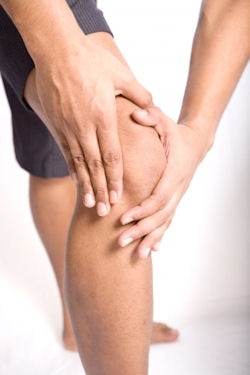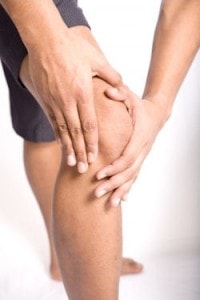I would like to dispel a myth that is common among my friends – I do get injured! I get injured more often that they think. I have had to DNF in races due to injury and ran my first marathon basically held together with barbwire and duct tape. Now that said, I have been pretty healthy recently and that is probably because I abide by the common rules about adding running volume. Yes, I do run a lot of miles but at the same time I have been consistently running for several years now and do not do that whole yo-yo start-stop routine with my running.
No Leprechaun Mojo…
Unfortunately, sometimes I push it a bit too hard and have to suffer the consequences. Today was one of those days. I have put in a lot of miles these last couple of weeks and being the “genius” that I am thought it would be a good idea to run 13.5 miles on Friday and then run the local 10k St. Patrick’s Day race after, I don’t know, a 20 mile warm-up.
The thought was to basically simulate the last 10k of the Boston Marathon – you know, finish fast while you are completely trashed. I woke up at around 5:15 am today and got ready to hit the roads so I could finish 20 miles and end at the starting line of the St. Patrick’s Day race at around 9:00am.
When I started my run, I got about a quarter of a mile into the 20 miler and felt a somewhat sharp pain on the backside of my left knee towards the inside of my leg. It made me stop and try to stretch it out but is persisted for a bit. I decided to head back home and blow off the 20 miler. On my way home it loosened up and basically went away. If figured I would try again on my long run as long as I kept it slow and thought that if it started again I would knock it off and call it a day.
I was lucky that the pain never returned during my 20 mile run but I could clearly feel all the miles I have been putting in recently. I made it to the start of the St. Patrick’s Day race right around 9:00 am like I had planned. The first event was the 1 mile Leprechaun Dash, which three of my kids ran, followed by the 10k scheduled for 10:00 am. While this gave me a bit of time to rest it also gave my legs and opportunity to tighten up as well.
As I started to try to loosen up for the 10k, that same pain was back behind my left knee. It was a sharp pain and one that altered my stride as I tried to get loose. I started to question whether I should sit out the 10k. I tried to open it up a bit and pick up the pace. The more I ran the more it started to loosen up. Unfortunately, as soon as I stopped it started to tighten up again. I noted the condition to my wife who recommended that I sit this one out since the Boston Marathon is now less than 30 days away. No sense in risking further injury in a throw-away 10k when it could mean missing out on Boston.
I figured I would give it one last stride to see how it went and as soon as I started to run, I could feel the same sharp pain on the back of my knee. That was it, I needed to sit this one out. I sat on the sideline and watched Spencer set a personal best in the 10k in yet another cold Tri-Cities spring hurricane.
When Should I Run Through Pain?
It’s very common for runners to experience some aches and pains, especially if you’re training for a long-distance event such as a marathon. The question that runner probably struggle with the most is when can you run through pain and when should you stop?
This question is somewhat difficult to answer especially for new runners who are just getting in touch with what their physical bodies and tolerate. Let’s face it, after a long run or other hard workout, you are likely going to experience muscle soreness and some generalized use pain. When you feel localized pain in some area of your body that is usually a sign that something is not right. If that pain is sharp and localized, that is something you need to pay attention to and, well, do something about.
So what are some of the different types of pain you can experience as a runner and what should you do about it?
Mild Generalized Pain
Mild generalized pain is the sort of pain that you commonly feel when you start to exercise. If you had a hard workout the prior day or even a few days before this sort of pain can be expected. This sort of pain can be all around your body and is more of a general annoyance than anything else.
A lot of times this sort of pain will go away as your body warms up and in general is not a concern to run through. The typical guidance for treating this sort of pain is to apply the RICE treatment (you know: Rest, Ice, Compression and Elevation).
Moderate Generalized or Localized Pain
This sort of pain is the pain you feel that does not go away but rather stays at a tolerable level throughout your run. While this does not fee good, if this pain does not cause to alter your running stride you are probably alright to finish your run but you should be reasonable and use prudence in making that decision.
If you do experience this sort of pain on your run you should probably take a step back after you finish your run and take a few days off. The RICE treatment is again the way to go here and taking a few days off to give your body a chance to heal up before you hit it again is not a bad idea.
When you do start running again, if the pain persists, you should consider taking some more time off otherwise you might end up with a “real” running injury.
Severe Pain
Ok, now you have a problem. This sort of pain is typically localized otherwise, well, you would probably already be in the hospital. This sort of localized pain is the type you not only feel during your run but also will typically persist when you stop as well.
Severe localized pain will often adversely impact your running stride. If you have pain that alters your running stride and does not go away almost immediately after you start running YOU NEED TO STOP!
Depending on how severe the pain is you might want to either try the whole RICE treatment for a few days to see if there is a change. Typically these sort of injuries, including many of this nature, will heal themselves within 7-14 days. Now, I am not a big go “see the doctor” person but if after some reasonable time off with no change this might be where you are. Just make sure you get one that actually “gets” what it means to be a runner otherwise you run the risk of getting some jaded advise that does not take into account your overall well-being.
So Where am I?
After my St. Patrick’s Day debacle of 2013 I am probably somewhere towards the latter since I had some highly localized pain on the backside of my left knee right where the ligaments connect towards the inside of my leg. Since tomorrow is Sunday I am going to be taking a day off anyway and I will try to apply some ice and see where it goes.
I normally have intervals on Mondays and I will move those to Tuesday and either try a light jog on Monday or blow the whole day off altogether. Next week is supposed to be my last hard week before the taper for Boston and, well, if it came down to it, if I had to take a step back next week, it would not be catastrophic.



Stephen, great advice for those who may be wondering if they should be running while injured. Sorry to hear you are having issues! Hope its nothing severe and that you are back out running without issue on Monday or Tuesday. And even though I missed my chance to beat you at a 10k today ;), I think it was a smart move to sit this one out.
Thanks man! As you know as a long-distance runner you are sort of continually in varying degrees of pain and knowing which is ok and which is not is something that is not always easy to discern. I am sure that I will be just fine, just take a day or two off and I should be fine. I hate that I missed running the 10k with you but I tell you what, if I had turned back into that wind that you finished in I probably would have just walked home. 🙂 So was it worse than the Tri-Cities Half? The conditions at 6 am were a whole lot better than they were at 10 am that is for sure!
I actually thought the wind was worse at the 10k yesterday. At least it seemed to slow me down more. It could be just that my body didn’t like running at a 7:15 pace very much…who knows!
What are you saying. It was clearly the wind. Your body loves 7:15 pace!
Awesome advise Stephen, I’m sure the L knee will be fine, just take it easy. Easier said then done though
Thanks man! I sure it will be fine but you are right, easier said than done with respect to taking it easy. Keep in mind you are talking to the guy who back in high school whet running right after getting back from the hospital where they x-ray’ed my foot because my doctor thought it was broken. 🙂
Smart move Steve to lay low for a couple days. I’m sure you will be back up and running soon, you are the bionic man you know 🙂 Serious though, this is a very informative write up about injuries. I had some severe worries about my first half (which i haven’t written yet) about plantar fasciatis. I thought i was doomed but through patience, persistence, and listening to my body it completely healed. It took me a while to figure out the listening part though.
Your are right Steve, listing to what your body is telling you is the most important step in warding off injuries. The problem is sometimes I just do not like what it is telling me. 🙂
I am sure that I will be fine with a couple of days rest. I feel a little pain when I lift my left knee in certain angles this morning but I expect that I should pass through relatively quickly. If I don’t, well, we all know that is not going to stop me from running in Boston anyway. 🙂
How did you heal your injury and how much time it took to heal, I am also getting similar pain back of my knee muscle. Given 4 week rest still its come out when start running again.